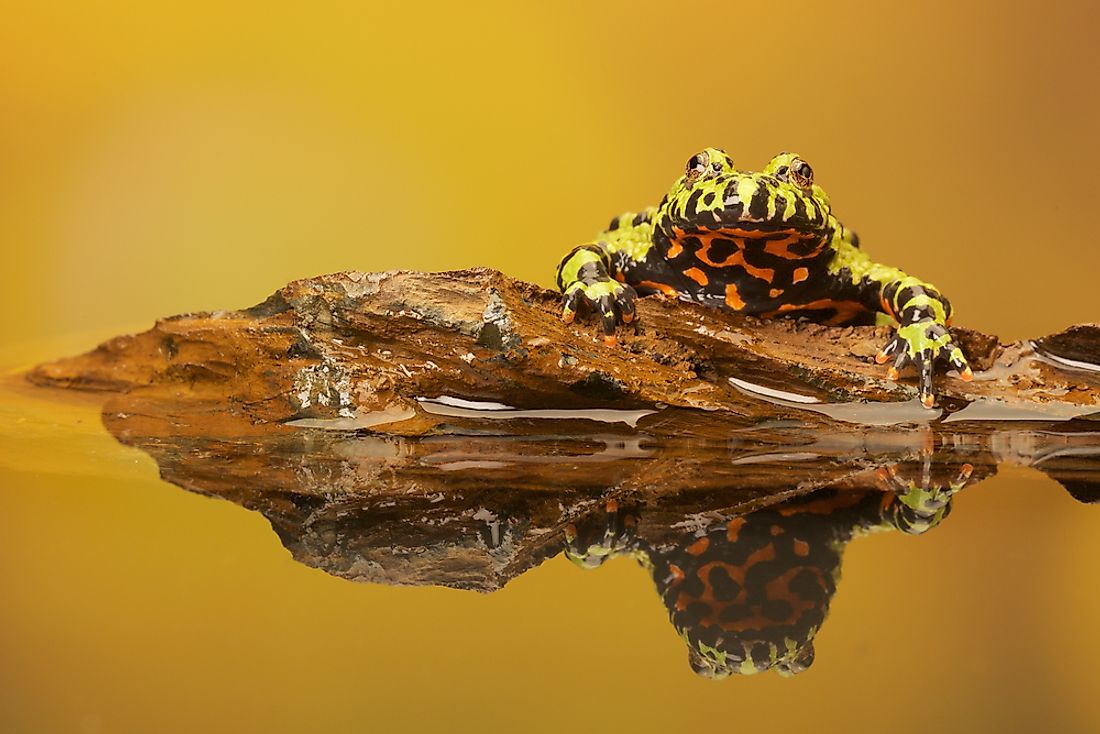Australia's Most Endangered Amphibians

Australia is the sixth largest country in the world with an area of 2.9 million square miles and a population of 24.3 million. The country consists of the mainland, Tasmania Island, and several other smaller islands. It is considered the 13th largest economy in the world. Being a semi-arid region, it is home to several habitats ranging from the tropical rainforests to alpine heaths. It is megadiverse with a major part of flowering plants, mammals, birds, and fish are only found in the country.
Australia's Most Endangered Amphibians
The White-bellied Frog
The White-bellied Frog, scientifically known as the Geocrinia alba, is a frog from the genus of Geocrinia and family of Myobatrachidae. It has a white belly and dark brown spots on it back which varies in color from light brown to gray. It inhabits wet and swampy areas of Witchcliffe-Karridale, southwest Australia. The frog has listed as critically endangered species due to the destruction of their habitat by animals through grazing, planting of trees or unexpected calamities such as fire.
Yellow-Spotted Bell Frog
The Yellow-Spotted Bell Frog, scientifically known as the Litoria Castanea, and commonly referred to as the New England swamp frog, tablelands bell frog or the yellow-spotted bell frog. The yellow-spotted bell frog is pale green with cream marks on its thighs. It is only found in southeast Australia in the temperate grasslands, rivers, swamps, freshwater lakes, freshwater marshes, and ponds. They are adapted to the permanent water bodies by its webbed toes though they have constantly been on the decline due to chytridiomycosis, a fungal infection in amphibians caused by fungus.
Baw Baw frog
The Baw Baw frog, scientifically known as Philoria frosti, is a frog from the family of Myobatrachidae and genus Philoria. It is dark brown in color with yellow flecks on the belly with a parotoid gland behind its eye which it secretes a substance that helps to keep predators away. Unlike the yellow-spotted belly, the Baw Baw frog’s toes are unwebbed.
Peppered tree frog
The peppered tree frog, scientifically known as Litoria piperata, is a species of the family of Hylidae only found in the Northern Tablelands, Australia. It is green on its back with black spots, a cream belly, and 1.2 inches long. The cause of their decrease has not been established substantially because it took place quickly and sufficient research was not done to ascertain it.
Elegant Frog
The Elegant Frog, scientifically known as Cophixalus concinnus, is a frog species from the family of Microhylidae found in the montane rainforests of Australia. The elegant frog has a smooth, gray back with orange patches with unwebbed toes. .
Threats to the Amphibians of Australia
The decline of the elegant frog has been associated with global warming since they are only found in a single location.The peppered tree frog has not seen in the wild since the late 20th century and has constantly been decreasing due to chytridiomycosis. Several factors could have contributed to the drastic reduction in their population, some of which are predators, chytridiomycosis, depletion of the ozone layer, and destruction of their habitat.
Australia's Most Endangered Amphibians
| Australia's Most Endangered Frogs | Scientific Name |
|---|---|
| White-Bellied Frog | Geocrinia alba |
| Yellow-Spotted Bell Frog | Litoria castanea |
| Nyakala Frog | Litoria nyakalensis |
| Spotted Tree Frog | Litoria spenceri |
| Baw Baw Frog | Philoria frosti |
| Sharp-Snouted Day Frog | Taudactylus acutirostris |
| Tinkling Frog | Taudactylus rheophilus |
| Kroombit Tinker Frog | Taudactylus pleione |
| Eungella Torrent Frog | Taudactylus eungellensis |
| Corroboree Frog | Pseudophryne corroboree |
| Myoloa Tree Frog | Litoria myola |
| Peppered Tree Frog | Litoria piperata |
| Armored Frog | Litoria lorica |
| Booroolong Frog | Litoria booroolongensis |
| Elegant Frog | Cophixalus concinnus |







